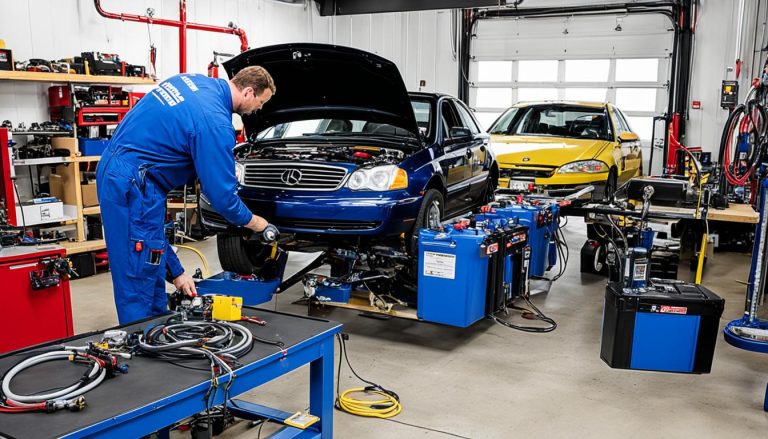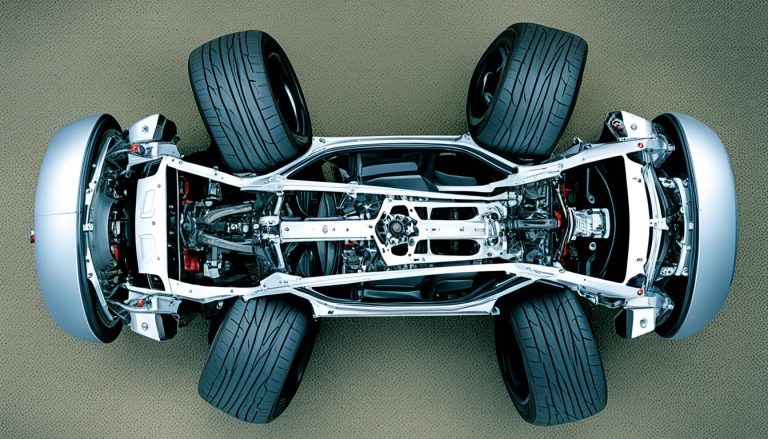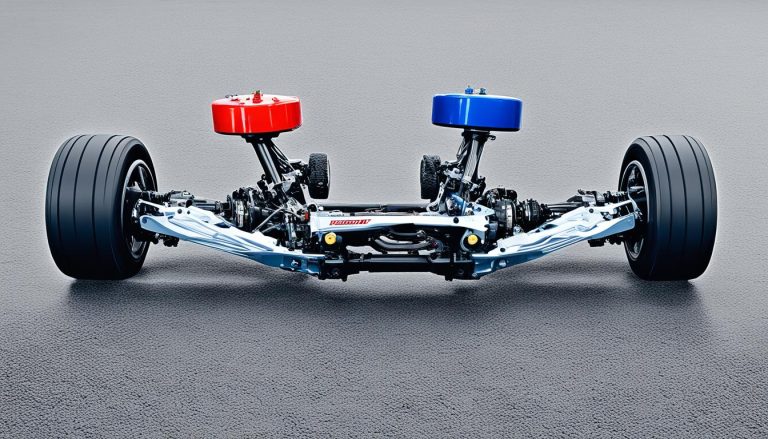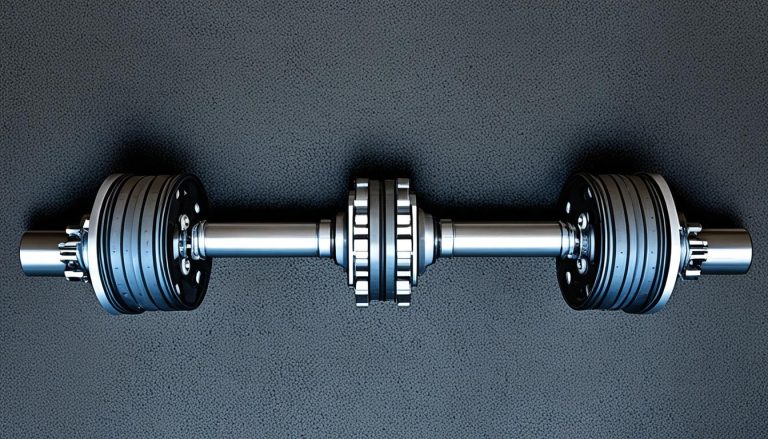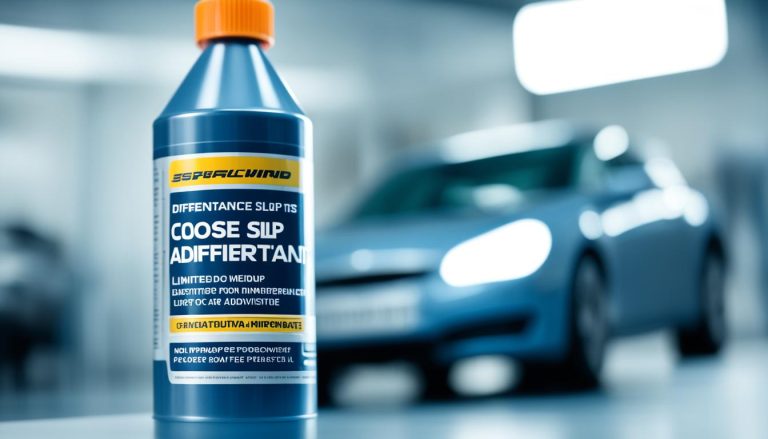Conventional vs Limited Slip Differential Guide
Have you ever wondered about the wizardry that goes into making your car handle those tight turns with ease or how it maintains poise when the road gets tough? You’re not alone! Behind the scenes, a critical component known as the rear axle differential works tirelessly to keep your ride smooth. This component might seem to work like magic, but there’s a clear distinction between a conventional differential rear axle and a limited slip differential (LSD). To enhance your automotive insight, let’s delve into a differential comparison and discuss how LSD vs conventional differential systems fundamentally differ and where each excels.
Key Takeaways
- Understand the basic role and mechanics of a conventional differential rear axle for smooth everyday driving.
- Learn how a limited slip differential provides increased traction and stability in varying road conditions.
- Explore the advantages and caveats of each type, making an informed comparison: LSD vs conventional differential.
- Gain awareness of why the rear axle differential is pivotal in vehicle handling and performance.
- Discover situations where an LSD could significantly enhance your driving experience.
Understanding the Basics of Rear Axle Differentials
When you’re navigating the roads, the performance of your vehicle hinges significantly on the intricacies of its rear axle differential. This vital component is the wizard behind the curtain, ensuring your wheels can rotate at different speeds during a turn without mishaps. There’s a spectrum of differential types at your disposal, each tailored to address specific driving dynamics and provide indispensable differential functions. To truly grasp their roles, it’s essential to have differentials explained in a way that elucidates their mechanics and advantages.
Functions and Mechanics of Differentials Explained
Indeed, the heart of any vehicle’s ability to maneuver lies within its differential. As you steer into a corner, the inner wheel travels a shorter path than the outer wheel. The differential steps in to balance this equation, allowing each wheel to turn at its own necessary speed. This not only ensures a smooth turn but also aids in the reduction of wear and strain on your tires, ultimately enhancing the lifespan of your vehicle’s components.
Conventional Differential Rear Axle vs Limited Slip Differential
Now, let’s examine the two primary rivals on the stage of traction and control: the conventional differential rear axle and the limited slip differential. The traditional path leads us to the conventional differential, a design celebrated for its simplicity and efficiency, delivering equal torque to both wheels while allowing them to spin at different speeds. It’s the default choice for general driving, but its limitations become palpable when a wheel loses contact with the pavement. That’s where the limited slip differential comes into play.
This advanced player enters with a grand promise of enhanced grip under the slipperiest of conditions. By limiting the speed difference between the wheels, it ensures that if one tire hits a patch of ice, the other will bear the brunt of the work to keep you in control. This type of differential is a beacon for vehicles trekking through terrains that demand superior traction control.
Whether your journeys lead you along well-trodden paths or across less predictable landscapes, understanding the types and functions of your vehicle’s rear axle differential arms you with the knowledge to navigate with confidence.
Recognizing Common Differential-Related Noises and Issues
One of the differential advantages is that it’s generally reliable, enabling your vehicle to navigate turns smoothly by adjusting the wheel speed on each side of your car. However, like any component, it has its differential disadvantages, particularly when it starts making noises which may signify potential issues with the rear axle differential. Being aware of these sounds can save you time and money, and keep your vehicle running efficiently.
Noises coming from your vehicle’s differential should not be ignored. Symptoms that might arise include:
- Whining when accelerating or decelerating
- Grinding while the vehicle is in motion
- Growling or humming at constant speeds
Each sound may be a clue to different types of underlying issues, from worn bearings or gear teeth to insufficient lubrication. Let’s take a closer look in the table below:
| Noise | Possible Cause | Recommended Action |
|---|---|---|
| Whining | Worn gears or bearings | Inspection and possible replacement of parts |
| Grinding | Lack of lubrication or broken gear teeth | Check and replenish differential fluid or repair gears |
| Growling/Humming | Bearing wear or misalignment | Comprehensive differential service |
While it might be tempting to overlook these noises, addressing them promptly can prevent more significant differential disadvantages down the road. Detecting such issues early can ensure that you benefit from the differential advantages, like efficient power transfer and controlled handling that a well-maintained rear axle differential provides.
Note: If you’re unfamiliar with the complexities of a differential, it’s recommended to seek professional mechanical assistance. A differential rebuild or maintenance service isn’t typically a DIY task for most car owners.
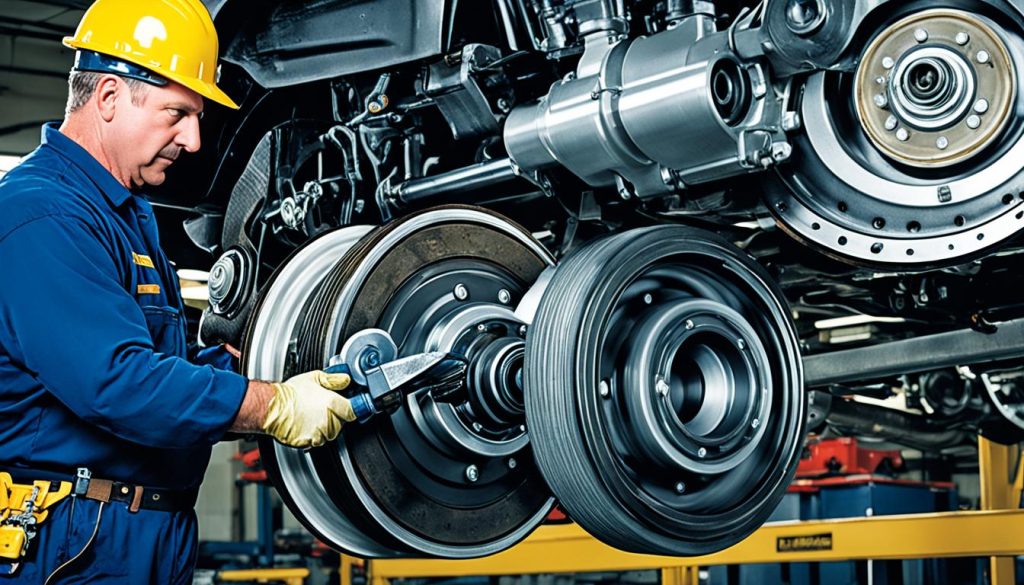
Ultimately, listening to your vehicle and responding to telltale signs can prevent long-term damage, ensuring that the differential continues to perform its essential function, allowing you to enjoy a smooth and safe driving experience.
The Inner Workings of Conventional Differentials
When you think of your vehicle’s ability to navigate turns seamlessly, thank the conventional differential rear axle. It’s the very heart of your car’s drivetrain, cleverly redirecting power from the driveshaft to your wheels. Imagine a ballet where the dancers—your wheels—move at different speeds but remain in perfect harmony. That’s what happens during a sharp cornering maneuver, thanks to the interplay of the ring gear and pinion gears within your conventional differential.
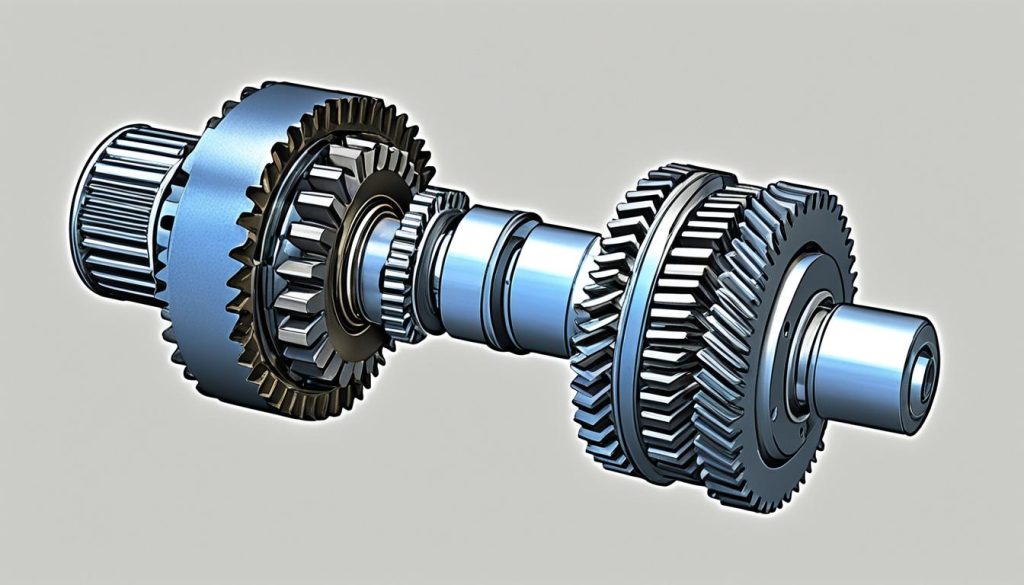
With every turn you take, the differential comparison merits appreciation. Unlike its limited slip counterpart, the open design of a conventional differential favors individual wheel speed management, which is essential when you’re taking on those unexpected sharp corners. It fosters divergent wheel spin, allowing one wheel to turn faster than the other—a fundamental necessity for preventing tire tread wear and delivering a smooth ride.
| Component | Function | Benefit |
|---|---|---|
| Ring Gear | Receives power from the driveshaft | Redirects torque at a right angle to the wheels |
| Pinion Gears | Interacts with the ring gear | Reduces rotational speed, allowing for controlled cornering |
| Open Design | Allows wheel spin at opposite directions | Manages differential wheel speeds on turns |
In this brilliant differential comparison, the conventional differential rear axle plays an integral role in effortlessly managing your journey. Whether you’re leisurely cruising through city streets or tackling twisting country roads, its design ensures that you maintain steady control and experience untroubled driving pleasure.
Unlocking the Potential of Limited Slip Differentials
As you delve into the world of vehicle performance and handling, the type of differential fitted in your car plays a pivotal role. A limited slip differential (LSD) is not just an upgrade; it’s a transformation that unlocks enhanced traction, control, and overall performance. Understanding the differential advantages of an LSD compared to a conventional differential lays the foundation for why a growing number of driving enthusiasts prefer this mechanical marvel. Let’s explore just how an LSD can improve your drive.
How Limited Slip Differentials Enhance Traction and Performance
What separates a limited slip differential from the pack? It’s all about managing traction. When faced with slippery conditions like mud or ice, conventional differentials may send power to the wheel with the least resistance, often resulting in a loss of control. By contrast, an LSD steps in to redistribute power to the wheel with more grip, significantly reducing wheel slip and aiding in propulsion. Whether you’re cornering sharply on a race track or climbing an incline off-road, an LSD helps ensure that the power your engine generates is effectively used to keep you moving forward.
Brands and Types of Limited Slip Differentials
The prowess of limited slip differentials is not a well-guarded secret; automotive brands have developed their versions under various monikers. You might have heard of Positraction from General Motors, Sure Grip by Chrysler, Anti-Spin from Jeep, and Safe-T-Track on some Pontiac models. Though the brand names differ, the goal remains the same: to outmatch the conventional differential by providing superior traction in a variety of driving conditions.
| Brand | Type | Notable Features |
|---|---|---|
| General Motors | Positraction | Even power distribution, excellent for high-performance vehicles |
| Chrysler | Sure Grip | Enhanced grip in low-traction scenarios, popular in muscle cars |
| Jeep | Anti-Spin | Total terrain conqueror, ideal for rugged off-road applications |
| Pontiac | Safe-T-Track | OEM-quality performance upgrade for classic and contemporary models |
Comparing an LSD vs a conventional differential presents clear evidence of the superiority of the former, especially when it comes to keeping both wheels engaged and driving you forward. For those seeking to elevate their vehicle’s capability, understanding the differential advantages is the first step in making an informed decision about switching to a limited slip differential.
Maintaining Your Rear Axle Differential for Optimal Performance
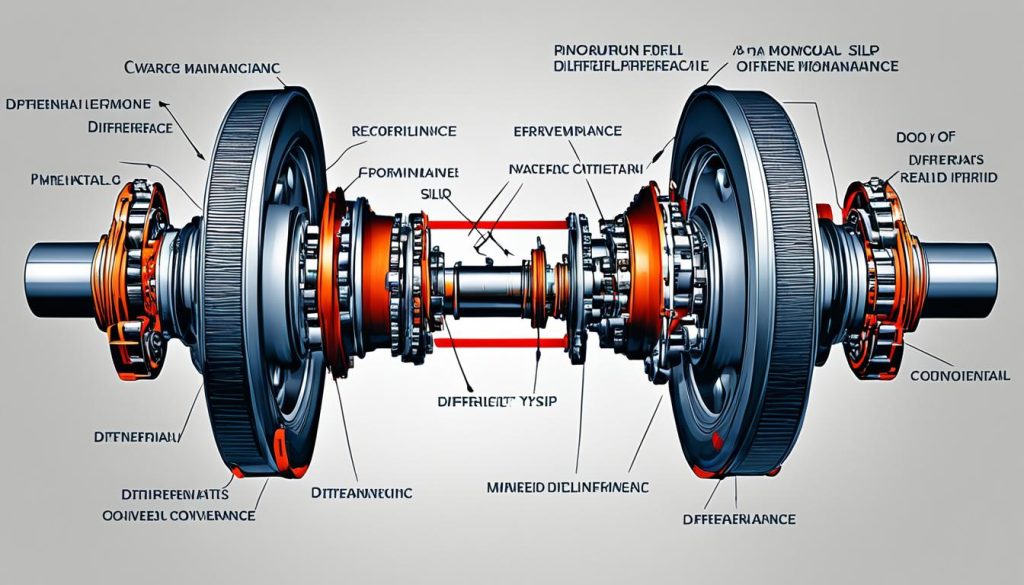
Understanding the differential functions in your vehicle is crucial for its health and your safety. A well-maintained rear axle differential ensures smooth operation and extends the lifespan of your vehicle’s drivetrain. Whether you’re cruising down the highway or navigating rough terrain, differential maintenance should never be overlooked. Here are essential maintenance tips to help you keep your rear axle differential in peak condition.
- Regular Fluid Checks: The differential fluid lubricates the gears and bearings inside your rear axle differential. Over time, this fluid can deteriorate or become contaminated, which may lead to increased friction and wear. Check the differential fluid level regularly and replace it according to your manufacturer’s recommended intervals, typically every 60,000 miles.
- Inspect for Leaks: Keep an eye open for any signs of leaks under your vehicle. A leak may indicate a seal or gasket failure, allowing vital lubricant to escape and potentially causing damage to the differential components.
- Differential Vent Tube: Ensure the differential vent tube is clear from blockages. A clogged vent can cause pressure to build up, resulting in leaks or seal damage.
By staying attentive to these practices, you can help prevent common differential issues such as excessive noise, vibration, or even complete failure. Below is a table that summarizes key maintenance activities and the impact they have on keeping your differential in top shape.
| Maintenance Task | Description | Impact on Performance |
|---|---|---|
| Oil Change | Replacing old fluid with high-quality gear oil | Reduces gear wear, prevents overheating |
| Leak Inspection | Checking for differential fluid leaks | Prevents low fluid levels that can lead to gear damage |
| Vent Tube Check | Ensuring the vent tube is not obstructed | Prevents pressure build-up and potential seal damage |
Remember, regular differential maintenance goes beyond just oil changes and inspections. Ensure your tires are evenly worn and properly inflated to avoid putting extra stress on the rear axle differential. After all, it’s this combination of tasks that will help your vehicle deliver the performance and reliability you expect.
Upgrading to a Limited Slip Differential: Is It Worth It?
If you’ve been mulling over a differential upgrade for better performance, you might be considering swapping out your current conventional differential for a Limited Slip Differential (LSD). But is the investment justifiable? Let’s explore the costs involved and the potential benefits for different driving conditions to make an informed decision on whether upgrading to an LSD is the right move for your vehicle.

Comparing Costs: Rebuilding vs Upgrading Your Differential
When you weigh the LSD vs conventional differential, cost is a crucial factor. Upgrading to a LSD often ranges from $1,200 to $1,500 if you opt for rebuilding with a new unit, which, while not insignificant, is an investment towards a significant performance enhancement for car enthusiasts.
The Benefits of Swapping to an LSD for Different Driving Conditions
The primary benefit of an LSD is the improved traction it provides across a variety of driving conditions. Whether you’re navigating slick roads or tackling uneven terrains, an LSD can make all the difference by distributing power to the wheel with the most grip. This key difference in a differential comparison between LSD and a conventional differential grants peace of mind and a performance edge, which for many, validates the expense of a differential upgrade.
In the realm of driving dynamics, upgrading to a Limited Slip Differential isn’t just about the ability to perform two-wheel burnouts; it’s about enhancing your vehicle’s response and stability in conditions where conventional differentials may falter.
How to Choose the Right Differential for Your Vehicle
Selecting the appropriate differential for your vehicle hinges on your typical driving conditions and your performance expectations. If your day-to-day routes involve smooth roads and predictable commutes, then the open, or conventional, differential meets these less demanding requirements with aplomb. However, should you aspire to embrace roads less traveled or expect your vehicle to perform under more challenging conditions, the debate of LSD vs conventional differential becomes particularly relevant.
Differential Comparison: LSD vs Conventional Differential on Various Terrains
In contrasting differential types, consider that while a conventional differential excels in facilitating easy turns and regular tire wear under uniform conditions, its limited slip counterpart shines when it comes to varied terrains. Whether navigating slick surfaces or adventuring off-road, limited slip differentials like those from Auburn Gear are engineered to mitigate wheel slip and distribute power more effectively between wheels, ensuring superior traction when you need it most.
Expert Tips for Selecting the Ideal Differential Type for Your Needs
Understanding differential functions and undertaking a robust differential comparison will guide you towards an informed decision. However, when the specifications and features seem daunting, turning to reputable manufacturers or seasoned automotive experts can be incredibly beneficial. These professionals can demystify the differential types and make it clearer whether the enhanced capabilities of an LSD align with your vehicle’s intended use, or if a conventional differential will suffice. In every case, your choice should address not just the current, but also the emerging needs of your driving adventures.
FAQ
What are the basic functions of a rear axle differential?
The main function of a rear axle differential is to enable a vehicle to turn smoothly by allowing the wheels to rotate at different speeds. It redirects power from the driveshaft to the wheels, compensating for the distance each wheel travels during a turn.
How does a conventional differential differ from a limited slip differential?
A conventional differential, also known as an open differential, allows for equal power distribution to both wheels while managing different wheel speeds during turns. It is ideal for everyday driving in normal conditions. A limited slip differential (LSD) provides enhanced traction control by reducing the speed difference between the wheels, making it more effective in performance or adverse conditions where one wheel may lose grip.
What are some common noises that indicate differential problems?
Noises such as whining, grinding, or growling from the rear axle differential can indicate issues that require service. These sounds may occur consistently or during specific actions like accelerating or turning. Paying attention to these noises and addressing them promptly is crucial for maintaining differential health.
What are the advantages of limited slip differentials over conventional differentials?
Limited slip differentials offer superior traction, particularly in conditions where one wheel is prone to slipping, such as on mud, ice, or during high-performance driving scenarios. They maintain power distribution to both wheels to help the vehicle maintain better forward momentum, which is particularly noticeable in performance situations.
How often should I maintain my rear axle differential?
For both open and limited-slip differentials, it is recommended to change the oil every 60,000 miles using high-quality gear oil. Regular inspection, even tire wear, and proper inflation are also crucial for ensuring the longevity and performance of your differential system.
What is the average cost of upgrading from a conventional differential to a limited slip differential?
Upgrading from a conventional differential to a LSD can cost between $1,200 to $1,500 for a rebuild with a new LSD unit. Costs may vary if opting for a used unit from a scrap yard. While the ability to perform two-wheel burnouts may appeal to some, the key benefit is the improved traction in various driving conditions.
How do I choose the right differential for my vehicle?
The choice of differential depends on your vehicle’s intended application. An open differential typically suffices for most passenger vehicles used for daily driving, while a limited-slip differential is beneficial for performance or challenging terrains. It’s best to consult with automotive experts or reputable manufacturers like Auburn Gear to find the differential that suits your driving needs.
What brands offer limited slip differentials, and are they different?
Brands like Auburn Gear offer limited slip differentials under various names such as Positraction, Sure Grip, Anti-Spin, or Safe-T-Track. These differentials may feature unique design characteristics tailored to specific performance levels and vehicle applications.

